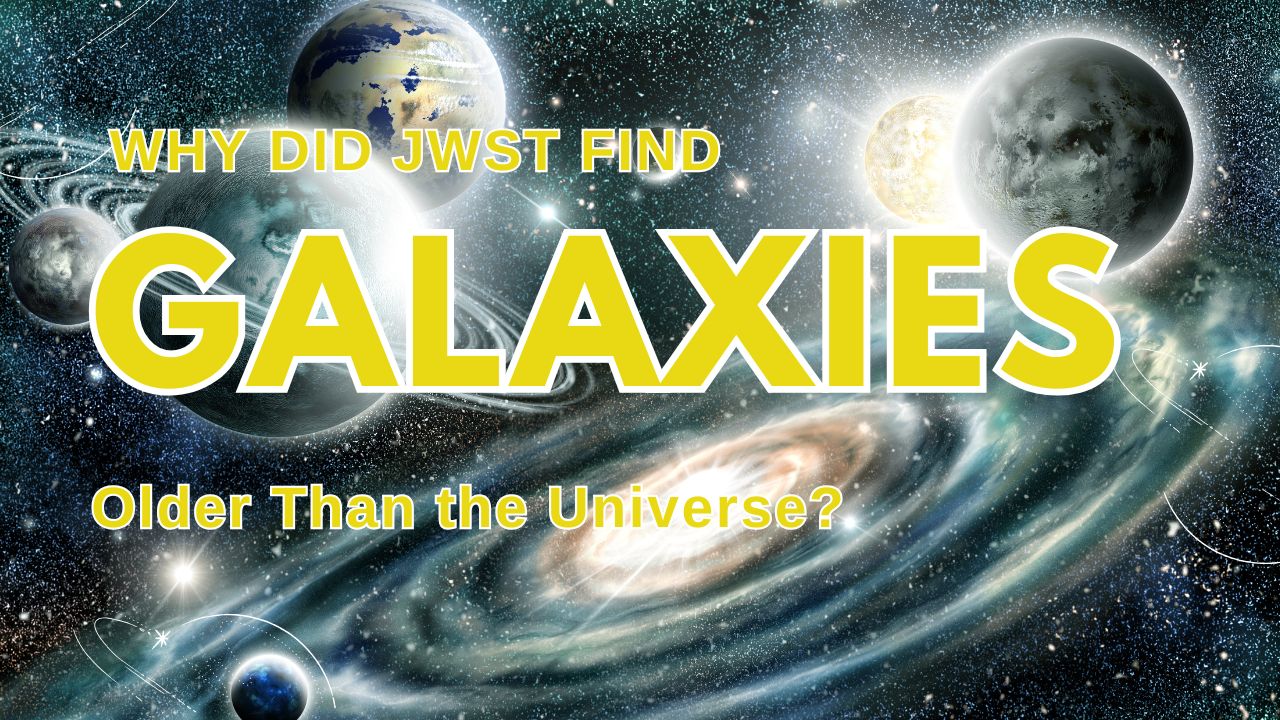The James Webb Space Telescope (JWST) is the most powerful space telescope ever built. It can see farther back in time than any telescope before, almost to the beginning of the universe! But recently, JWST made a puzzling discovery: galaxies that look older than the universe itself!
How can a galaxy be older than the universe? Did JWST break the rules of space and time? Or is there another explanation? Scientists are working hard to solve this mystery.
Could our understanding of the universe be wrong? Let’s explore this cosmic puzzle!
How Can JWST See the Past?
Light takes time to travel through space. When we look at distant galaxies, we see them as they were billions of years ago because their light took that long to reach us.
Close galaxies: We see them as they were recently.
Far galaxies: We see them as they were long ago.
JWST’s power: It sees galaxies from just 200-300 million years after the Big Bang!
Fun Fact: Looking at the night sky is like looking into a time machine!
What Did JWST Discover?
JWST found six very old galaxies that shouldn’t exist yet. Here’s why they’re surprising:
Too Big: They have as many stars as our Milky Way, but formed too early.
Too Mature: They look fully developed, not young and chaotic.
Too Soon: They existed before scientists thought galaxies could form.
Big Question: How did they grow so fast?
How Old Is the Universe?
Scientists believe the universe is 13.8 billion years old. They calculated this by:
Measuring the expansion of the universe
Studying the oldest light (cosmic microwave background)
Dating the oldest stars
Fun Fact: If the universe’s age were a 24-hour day, humans appeared in the last second!
Why Do These Galaxies Seem Older?
There are three possible explanations:
We’re Wrong About the Universe’s Age
- Maybe the universe is older than we thought.
- But all other evidence says 13.8 billion years is correct.
Galaxies Formed Faster Than We Thought
- Maybe the first stars and galaxies grew super quickly.
- JWST might help us learn how.
We’re Measuring Them Wrong
- Maybe these galaxies aren’t as old as they look.
- Dust or other factors could trick our telescopes.
Most Likely Answer: #2 galaxies formed faster than expected!
Could the Big Bang Theory Be Wrong?
Probably not! The Big Bang theory explains many things perfectly, like:
The expansion of the universe
The cosmic microwave background
The amount of hydrogen and helium
But JWST’s discovery might mean we need to adjust how galaxies formed after the Big Bang.
Fun Thought: Science is always learning, even big theories can get small updates!
What’s Next for JWST?
JWST will keep studying these mysterious galaxies to:
Confirm their age with more data
Study their stars to see how they formed
Find more examples to solve the puzzle
Exciting Fact: JWST is just getting started, it could work for 20 more years!
Conclusion
JWST found galaxies that shouldn’t exist yet, challenging what we know about the early universe. The most likely answer? The first galaxies formed much faster than we imagined! This doesn’t break science, it helps us learn more about how the universe grew.
📌 Frequently Asked Questions
How does JWST see so far back in time?
JWST detects infrared light from extremely distant galaxies, whose light has traveled for billions of years before reaching us, showing us the ancient universe.
What’s the oldest galaxy ever found?
As of 2024, the oldest confirmed galaxy is JADES-GS-z13-0, seen as it was just 320 million years after the Big Bang.
Could the universe be older than we think?
Possible but unlikely, all current evidence (like cosmic background radiation) agrees on 13.8 billion years, so the galaxy ages probably need rethinking instead.
Why were scientists surprised by JWST’s findings?
The galaxies were too massive and mature for their age, suggesting galaxies formed much faster after the Big Bang than theories predicted.
How do we know how old the universe is?
Scientists measure the expansion rate of the universe and study the cosmic microwave background radiation left over from the Big Bang.
What’s the difference between JWST and Hubble?
JWST sees infrared light (better for ancient galaxies), while Hubble mainly sees visible light. JWST also has a much larger mirror for sharper images.
Could dark matter explain these old galaxies?
Maybe! Dark matter’s gravity might have helped galaxies form faster, but scientists are still investigating this possibility.
Will JWST find even older galaxies?
Very likely! JWST is just starting its mission, and future observations might push our view closer to the Big Bang than ever before.
How many galaxies has JWST found so far?
Thousands! But the six “too-old” galaxies are the most puzzling because they don’t match current theories.
What would disprove the Big Bang theory?
If we found objects clearly older than 13.8 billion years, it would challenge the theory, but so far, nothing has fully contradicted it.
